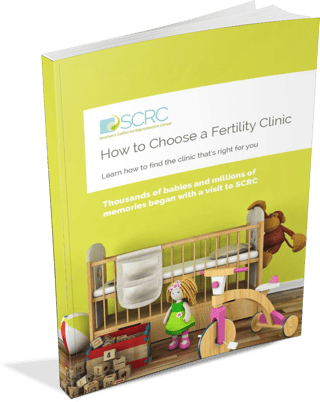Every patient arrives at the fertility clinic with their own history and their own unique needs, but the vast majority of infertility cases are caused by a handful of common problems. Tubal-factor infertility, or a problem with a woman’s fallopian tubes, is one of the most common.
Hysterosalpingogram: How to Prepare, What to Expect, and Side Effects of the HSG Test
Implantation After IUI: Symptoms to Look for and What to Expect
The experience of fertility treatment is often full of uncertainty and anxiety: by the time you undergo treatment you may have spent a long time trying to have a baby, but it’s the last short stretch that’s often the hardest.
Getting Pregnant after Laparoscopy: What You Need to Know
Laparoscopy, also sometimes called “keyhole surgery” is a minimally invasive type of surgery that is often used to investigate or treat fertility issues, though it is also used for other common types of abdominal or pelvic surgery such as an appendectomy, gallbladder removal, or gastric band placement.
How to Improve Egg Quality for Pregnancy or IVF
Egg quality is one of the most important factors in whether a woman is able to conceive, but it is a topic that many never think about until they are already struggling to get pregnant. Poor egg quality is caused by diminished ovarian reserve and is one of the most common causes of infertility, especially in women over 35.
Egg Freezing as a Fertility Preservation Option for Cancer Patients
Fertility preservation for cancer patients is an important subject in the world of reproductive medicine. Young women who have been diagnosed with cancer may be suddenly confronted with the possibility that their fertility is likely to be compromised by the life-saving treatment they need.
How to Improve Your Uterine Lining to Prepare for IVF
The lining of a woman’s uterus, also called the endometrium, is where a developing embryo implants in the first days of a pregnancy. For women undergoing IVF, the thickness of this lining is very important. The fertility doctor will measure the thickness of the lining before the embryo transfer, to ensure that it is sufficiently thick to allow for implantation. A thick, receptive, nourishing uterine lining is the best possible environment for the embryo, and the ideal lining is at least 7 to 8mm thick and displays a “trilaminar” (or “three layered”) appearance on an ultrasound.
Fertility Yoga: How to Reduce Stress While Trying to Conceive
Chances are you have felt lost, uncertain, and extremely pained at some point in your life. Your feelings stemming from events that may have felt out of your control. A sense of powerlessness paired with unanswered questions creeping in as you work to cope with your life altered. The overwhelming sensation of “I don’t want this” and “why me?” consuming your mind and flowing throughout your body. Every part of you wishes for it to stop, go away, be different.
Fertility after Chemotherapy: Can a Woman Get Pregnant after Cancer Treatment?
When you are dealing with a cancer diagnosis, planning for the future can be extremely challenging. The shock and stress of getting the diagnosis and undergoing treatment can understandably be all-consuming. For women who want to have a family after undergoing chemotherapy, worry about future fertility is often just another source of pressure at an extremely difficult time.
Donor Egg Pregnancy: How Using Donor Eggs Affects IVF Success Rates
While the public awareness and acceptance of using IVF to grow your family has increased in recent years, egg donation is less talked about. The shame and secrecy around the subject are standing in the way of patients who could benefit from the gift of donor eggs. For many women struggling to conceive, the decision to use an egg donor can feel fraught.
Can Proper Nutrition Improve Fertility in Women with PCOS?
Ovulation issues are a frequent cause of infertility. And polycystic ovarian syndrome (PCOS) is often the part of the reason for the ovulation issue. In fact, 10%-15% of women seeing fertility specialists have PCOS.














